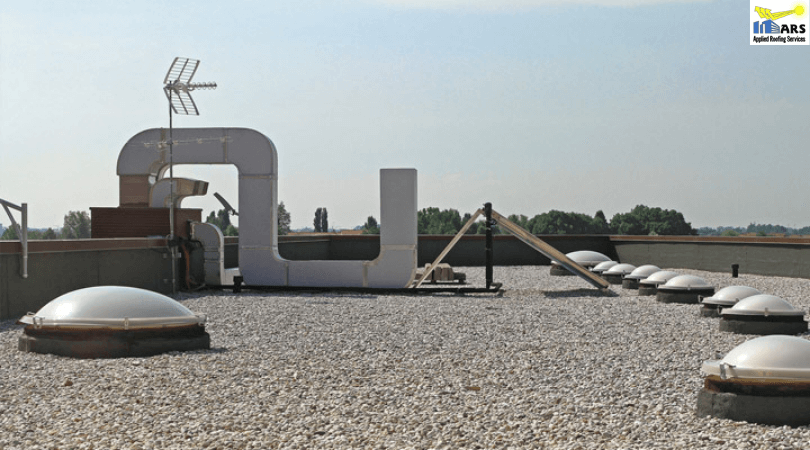


Built-up roofing systems (BUR) are a popular choice for buildings with a flat or low-sloped roof. Made of alternating layers of bitumen (asphalt) and reinforcing fabric (fiberglass), the surface of BUR systems is layered with fine gravel or small stone.
Common built-up roof types include:
In hot BUR, the bitumen is heated and liquefied during installation. As a result, installing hot BUR roofs can be tricky, as roofers have to work with heated materials.
Here, the bitumen is cooled and used like an adhesive. Cold BUR roofs can be applied or sprayed with a squeegee. They do not emit toxic fumes and are not affected by weather fluctuations. Also, these roofs perform better than hot built-up roofs.
The surface layer of this roof uses heavy stones that keep the roof in position. This means that the lower layers don’t need to be fastened or adhered to the roof structure.
Built-up roofs contain tar or coal tar, which does not catch fire easily. The tightened bitumen layer also keeps water away from the building. The fiberglass coated with aggregate makes the roof sturdy, ensuring ultimate protection against extreme weather conditions (such as hail storms and strong winds).
The BUR roofing system has a reflective coating that protects against UV rays which helps keep the building cool. Therefore, you can save a considerable amount on your electric bill.
Generally, these roofs are installed in large sheets having a lower profile than shingles. As a result, the material is less likely to damage and therefore does not require frequent maintenance.
A built-up roof system is made of three parts: bitumen, ply sheets, and surfacing material.
A built-up roof can last for 15 to 40 years, depending on the climate, construction, and materials used. Generally, these roof systems perform better in warmer regions. A built-up roof system is undoubtedly the best roofing system for commercial buildings due to its extensive weather protection, durability, and high energy efficiency. All you need to do is to hire a professional roofing contractor to ensure proper installation. If you are looking for the best commercial roofing company in Orange County and Los Angeles for your roofing needs, contact Applied Roofing Services today at 714-632-8418 or get a quote online.